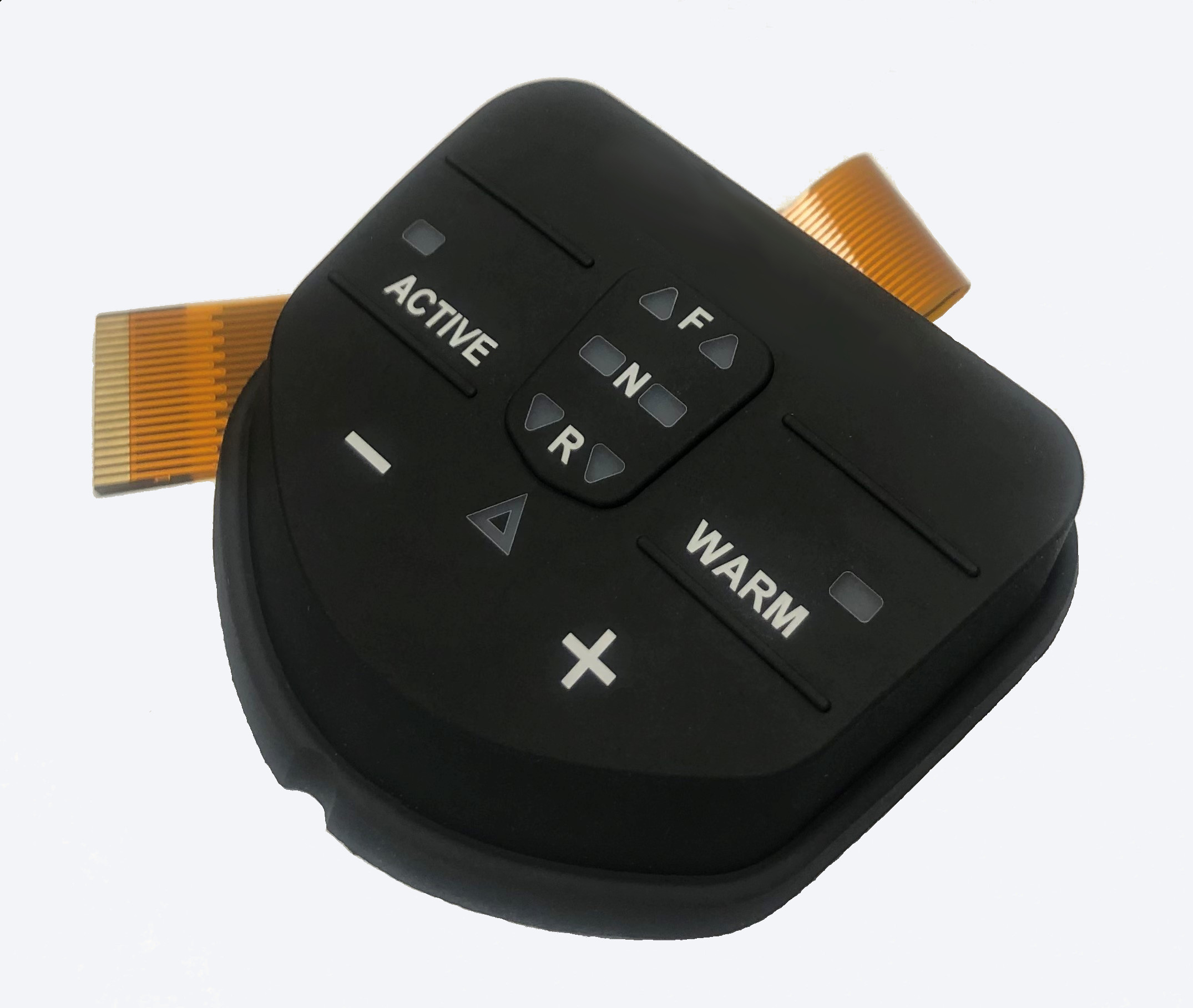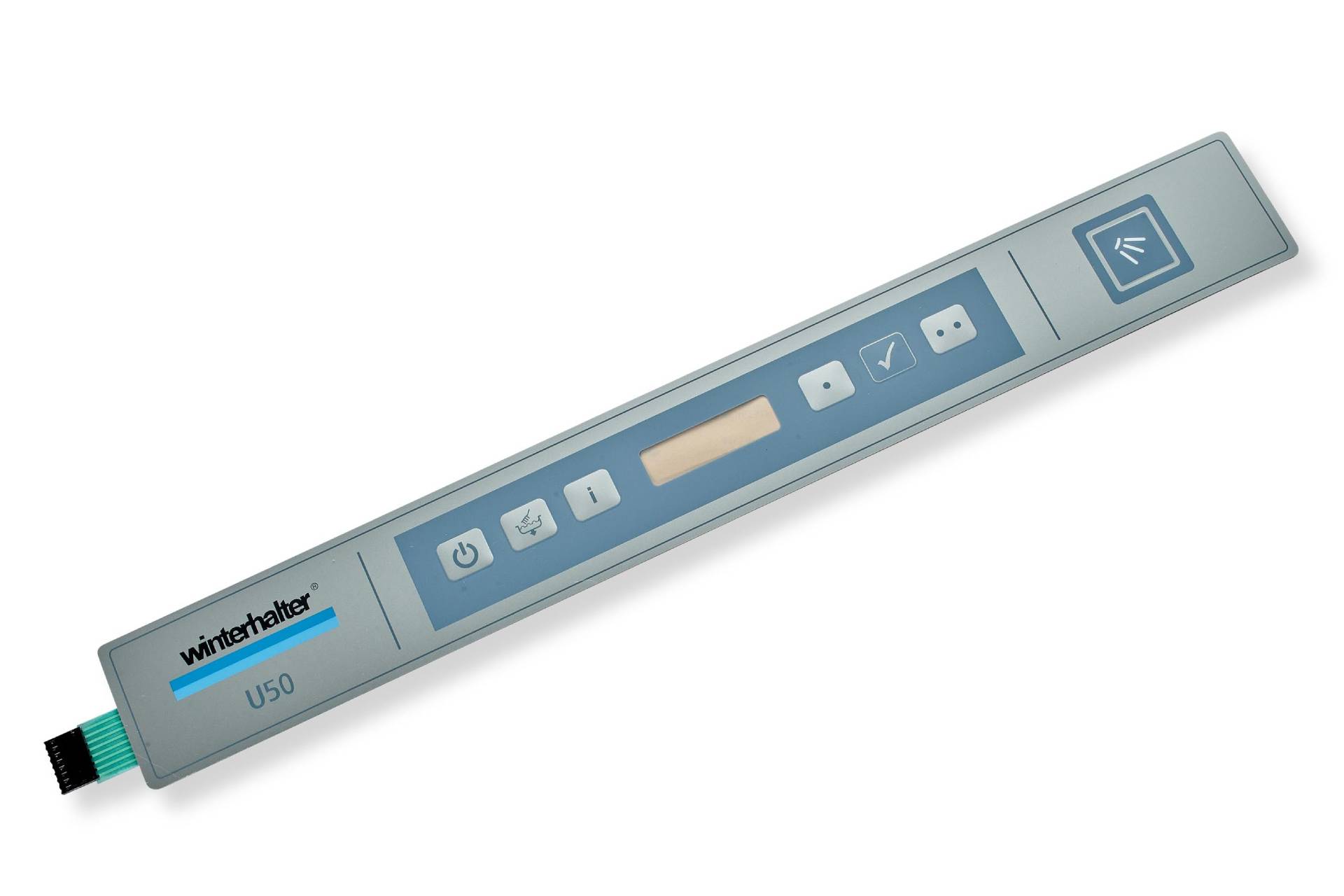Why elastomer is the material of choice for most Rubber Keypads
A Comprehensive Overview to the Manufacturing and Handling of Rubber Keypads for Optimal Efficiency
The production and handling of rubber keypads play a crucial duty in their efficiency and use. Material option, style accuracy, and innovative production techniques considerably impact their longevity and performance. Comprehending these aspects is crucial for creating premium products. As different innovations arise in this field, discovering their ramifications could disclose brand-new requirements for capability and individual experience. What key aspects will shape the future of rubber keypads?
Understanding Rubber Keypads: Products and Types
Rubber keypads are vital elements in many tools, supplying an equilibrium of resilience and tactile feedback. These keypads are mainly made from silicone or artificial rubber, materials picked for their adaptability and strength. Silicone rubber, particularly, is preferred for its outstanding temperature resistance and long life, making it optimal for different applications, from customer electronic devices to commercial equipment.
There are numerous types of rubber keypads, including dome button keypads, which utilize a dome-shaped system that supplies responsive feedback when pushed. In addition, there are likewise level keypads, which include a smooth surface area and are commonly made use of in remote controls and clinical gadgets. The option of product and kind affects the keypad's performance, feel, and total individual experience. Recognizing these elements is essential for developers and manufacturers intending to create trustworthy and effective interfaces in their products.
The Manufacturing Process: From Layout to Manufacturing
The manufacturing process of rubber keypads includes several vital stages, beginning with style and ending with manufacturing. Initially, designers develop detailed specifications and prototypes, ensuring the keypad satisfies practical and visual needs. Computer-aided style (CAD) software is frequently utilized to picture the layout and attributes before continuing.
Once the design is finalized, product choice is important, with choices generally including silicone or all-natural rubber. In the next stage, mold and mildews are created based on the authorized styles, which will certainly form the keypads during manufacturing.
Adhering to mold and mildew production, the production stage begins, where rubber is blended with ingredients to enhance efficiency. The blend is then poured into mold and mildews and based on warmth and pressure, permitting it to solidify and treat.
The ended up keypads undergo top quality checks to verify they satisfy recognized criteria, adhered to by packaging for distribution. This comprehensive process guarantees peak efficiency in the last item.
Key Techniques in Rubber Molding
In the domain of rubber keypads, numerous molding techniques play a crucial function in figuring out the top quality and functionality of the end product. One common approach is compression molding, where raw rubber is positioned in a heated mold and mildew and stress is used, allowing for efficient automation and harmony. An additional considerable strategy is shot molding, which entails injecting heated rubber into a mold, using higher accuracy and complex shapes. Transfer molding, a hybrid of both approaches, is also used, especially for elaborate styles, as it combines the advantages of both processes. Additionally, fluid silicone rubber (LSR) molding is obtaining grip because of its flexibility and longevity, making it perfect for high-performance applications. Each technique possesses special characteristics, influencing aspects such as cycle time, product waste, and production costs. Choosing the appropriate molding strategy is necessary for attaining peak efficiency in rubber keypads.
Surface Area Finishing and Texturing Options
Surface area completing and texturing options play a necessary duty in boosting the responsive experience and visual appeal of rubber keypads. Producers utilize various strategies to create distinct surface area features that affect individual interaction and product layout. Typical ending up methods include matte, shiny, and satin finishes, each providing different aesthetic effects and grasp degrees. Texturing choices, such as raised patterns, grooves, or stippling, better improve performance by improving traction and reducing slippage during use.
Furthermore, specific textures can be customized to meet ergonomic requirements, giving comfort throughout extended usage. The choice of surface area coatings and structures can be influenced by the designated application of the keypad, whether it be for consumer electronic devices, auto controls, or industrial devices. Ultimately, cautious factor to consider of these choices adds significantly to customer complete satisfaction and total item performance, making them crucial components in the design and production procedure of rubber keypads.
High Quality Control Actions in Rubber Keypad Production
Quality control steps in rubber keypad production are important for guaranteeing product reliability and efficiency. These measures encompass material option requirements, extensive screening procedures, and strict final assessment criteria. With each other, they develop a detailed framework that helps suppliers promote high quality throughout the manufacturing procedure.

Product Option Requirements
Selecting the appropriate materials for rubber keypads is necessary, as it directly impacts their resilience, capability, and customer experience. Key requirements for material selection include tensile stamina, resilience, and environmental resistance. The option of rubber substance, such as silicone or thermoplastic elastomer (TPE), plays a crucial duty in achieving wanted responsive responses and durability. Additionally, variables like chemical compatibility, temperature level stability, and UV resistance need to be considered to ensure optimal efficiency in numerous applications. Manufacturers must also review the ease of processing and cost-effectiveness of products, stabilizing quality with budget plan restraints. Ultimately, the ideal material option not only improves the keypad's performance however also adds to total product high quality and customer you can check here contentment.
Evaluating Procedures Executed
After establishing the ideal materials for rubber keypads, strenuous screening procedures are executed to confirm that the end products fulfill industry standards and client expectations. These treatments usually consist of mechanical testing, which examines the resilience and elasticity of the rubber under different problems. Additionally, environmental screening analyzes the keypads' efficiency under temperature changes, moisture, and direct exposure to chemicals. Electric screening confirms the keypads operate appropriately with electronic components, verifying responsiveness and conductivity. Furthermore, tactile feedback is assessed to guarantee user complete satisfaction. These substantial screening actions are necessary in determining any type of inconsistencies or issues before automation, inevitably improving the reliability and efficiency of rubber keypads in their designated applications.
Last Evaluation Standards
Thorough last assessment standards are critical in rubber keypad production to guarantee that each device meets the defined criteria for capability and appearance. This procedure generally involves visual analyses to determine any kind of surface area defects, such as staining or imperfections. Additionally, responsive evaluations identify that the keypads respond accurately to touch, maintaining the required level of sensitivity. Longevity tests may likewise be performed, simulating long term use to confirm the durability of the keypad under different problems. Furthermore, i thought about this adherence to sector laws and customer specifications is confirmed to keep top quality guarantee. By executing these strenuous examination measures, producers can considerably lower the risk of defects, ensuring that the last product is dependable and meets consumer assumptions, inevitably boosting client contentment.
Developments in Rubber Keypad Innovation
As technology proceeds to progress, advancements in rubber keypad innovation are reshaping customer interfaces throughout various markets. One substantial innovation is the integration of capacitive touch sensors within rubber keypads, permitting a much more functional and receptive user experience. This technology enables customers to engage with gadgets with touch, improving functionality without sacrificing the responsive responses that rubber keypads are recognized for.
Additionally, enhancements in material formulas have actually resulted in the development of even more resilient, weather-resistant rubber, making keypads ideal for commercial and outside usage. Improved printing strategies likewise enable high-resolution graphics and backlighting alternatives, boosting visibility and aesthetic charm.

Furthermore, advancements in producing processes, such as 3D printing, are allowing custom-made styles and quick prototyping, enhancing manufacturing timelines. These developments collectively add to extra efficient and straightforward rubber keypads, ensuring they satisfy the needs of contemporary applications while maintaining their core benefits.
Best Practices for Style and Functionality
Designing effective rubber keypads requires careful evaluation of both aesthetics and performance. Rubber Keypads. A well-designed keypad ought to balance ergonomic principles with aesthetic interest improve individual experience. Trick variables consist of size, form, and spacing of switches, ensuring they are simple to press while protecting against unexpected activation. Utilizing contrasting shades and textures can enhance visibility and tactile comments, helping individuals in identifying in between tricks
Furthermore, the choice of materials plays an essential role; top quality rubber compounds can enhance sturdiness and resistance to wear. It is visit this page additionally crucial to take into consideration the assimilation of features such as backlighting and custom-made graphics, which can enhance use in various environments.
Prototyping and customer testing are invaluable in the layout process, enabling for changes based on real-world responses. By sticking to these best practices, manufacturers can produce rubber keypads that not only look enticing but additionally meet the useful demands of users efficiently.
Frequently Asked Questions
Just how Do I Choose the Right Rubber Material for My Keypad?
To choose the appropriate rubber product for a keypad, one ought to consider aspects such as sturdiness, ecological resistance, tactile feedback, and compatibility with the desired application, making sure ideal performance and customer satisfaction in different conditions.
What Are the Environmental Effects of Rubber Keypad Manufacturing?
Rubber keypad production can bring about environmental influences such as deforestation for natural rubber resources, air pollution from chemical processes, and waste generation. Lasting practices and materials can minimize some of these unfavorable effects on ecological communities.
Can Rubber Keypads Be Recycled or Reused?
Rubber keypads can be recycled, but the procedure depends upon the specific materials utilized in their manufacturing. Reusing them in different applications is likewise feasible, adding to throw away decrease and advertising sustainability in manufacturing techniques.
What Is the Typical Lifespan of a Rubber Keypad?
The typical life expectancy of a rubber keypad typically ranges from 5 to ten years, depending upon use, ecological aspects, and upkeep. Routine care can extend its functionality, while excessive wear may shorten its resilience.
Are There Any Kind Of Health Problems Associated With Rubber Keypad Materials?
There are potential health and wellness problems connected to rubber keypad products, including allergies to specific chemicals and toxic irritants utilized in production. Proper handling and awareness of product structure can alleviate these threats for customers.
There are numerous types of rubber keypads, consisting of dome button keypads, which utilize a dome-shaped mechanism that gives responsive responses when pushed. Selecting the appropriate products for rubber keypads is essential, as it straight affects their toughness, functionality, and user experience - Rubber Keypads. After determining the ideal materials for rubber keypads, strenuous screening procedures are applied to verify that the last items satisfy market standards and consumer expectations. Rubber keypad manufacturing can lead to ecological influences such as logging for all-natural rubber sources, air pollution from chemical procedures, and waste generation. Rubber keypads can be reused, yet the process depends on the specific materials used in their manufacturing